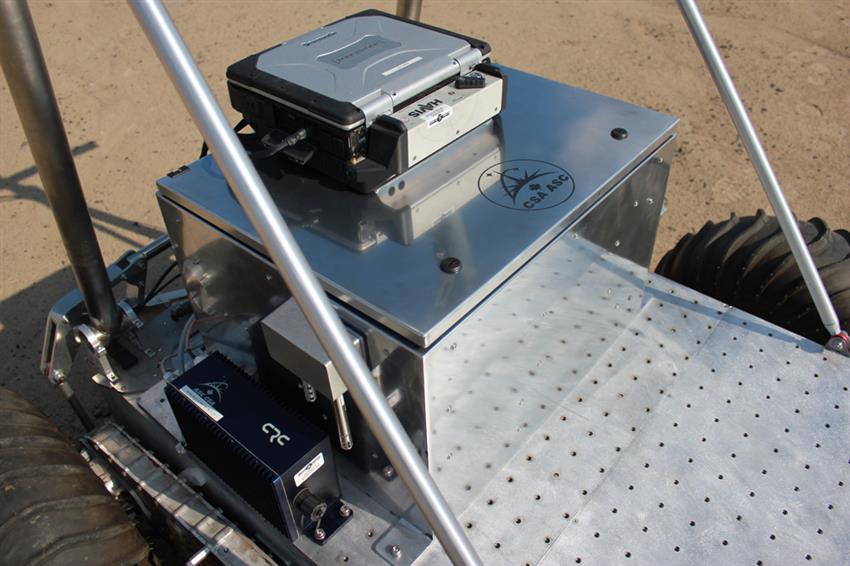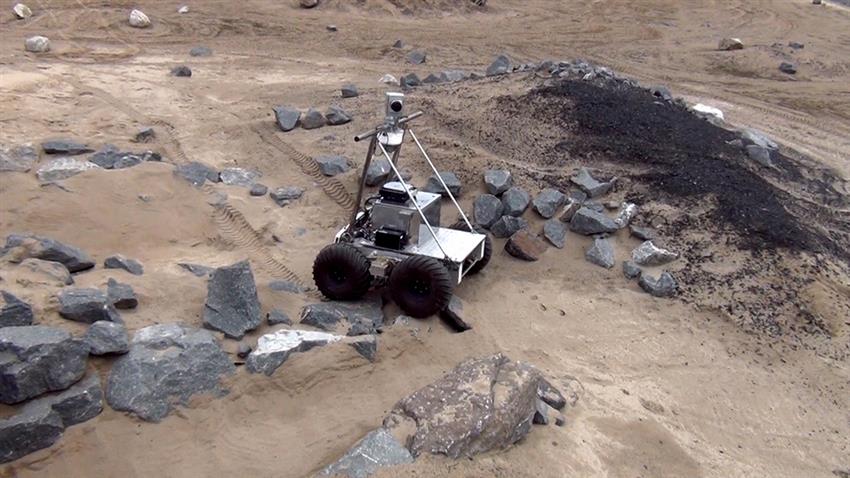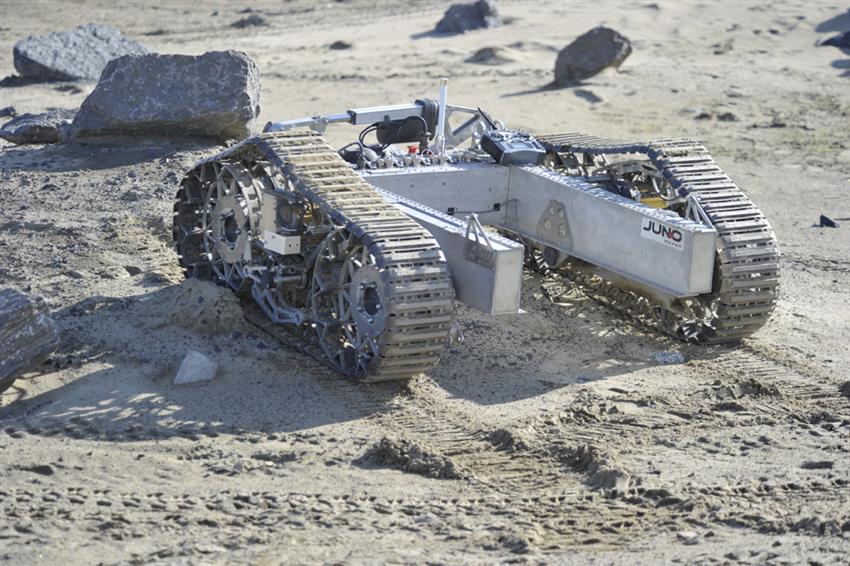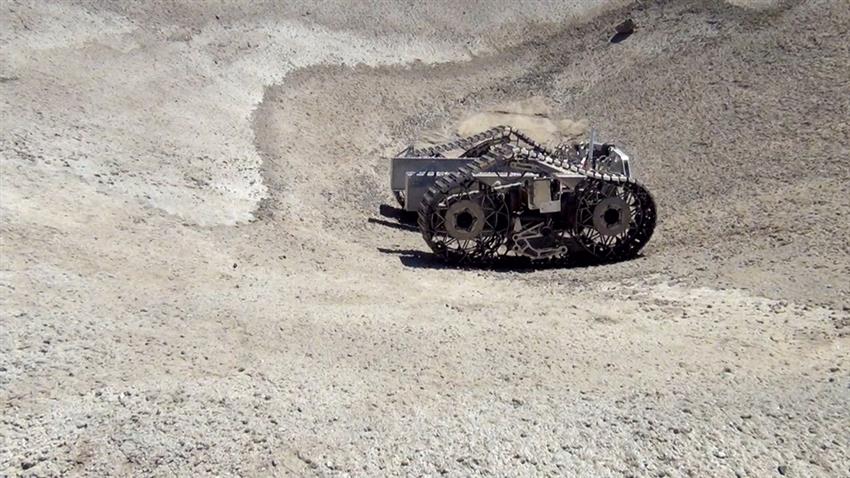Juno
Family of five multi-purpose U-shaped rovers designed to carry science instruments and payloads. Juno rovers were used in NASA-led field tests on the rocky slopes of a Hawaiian volcano to simulate missions to the Moon (2010, 2012).
Technical details
| Target destination | Moon |
|---|---|
| Size (Length, width, height) | 1.38 m x 1.6 m x 0.75 m (without mast option installed) |
| Mass | 300 kg |
| Can carry | 275 kg |
| Speed | 12.5 km/h top speed |
| Powered by | Electrical power (Lithium-Ion batteries) |
Highlights
- Can use many different types of wheels (rubber, metal or iRings) or a set of metal tracks
- Juno can carry almost as much as it weighs, is surprisingly quick and agile and can drive over all sorts of terrain and large rocks
Built by
Neptec Design Group.
Partners
Ontario Drive and Gear Ltd. (OGD), McGill University, CrossChasm Technologies, University of Ottawa.
What are iRings?
A flat tire is always unwelcome, but even more if you are in the midst of roving on the Moon! iRings are specially developed rugged rover wheels made of an outer layer that looks like chain mail, which can be filled whatever material might be available (for instance, lunar soil and rocks). Their sturdy, flexible design allows a rover to drive over rocks, lumps and bumps typical of the extreme terrain found on the Moon.












